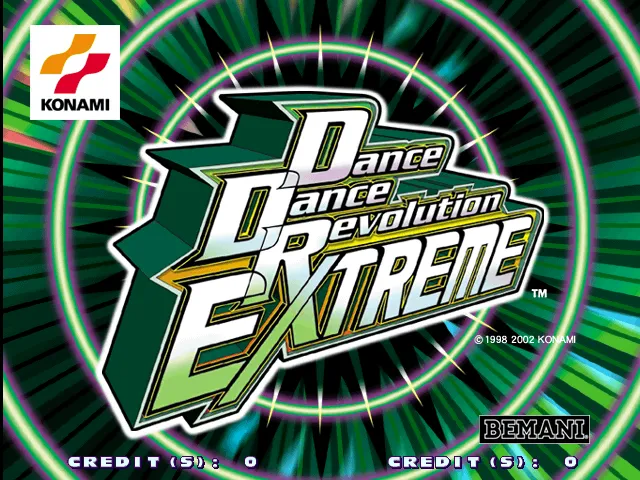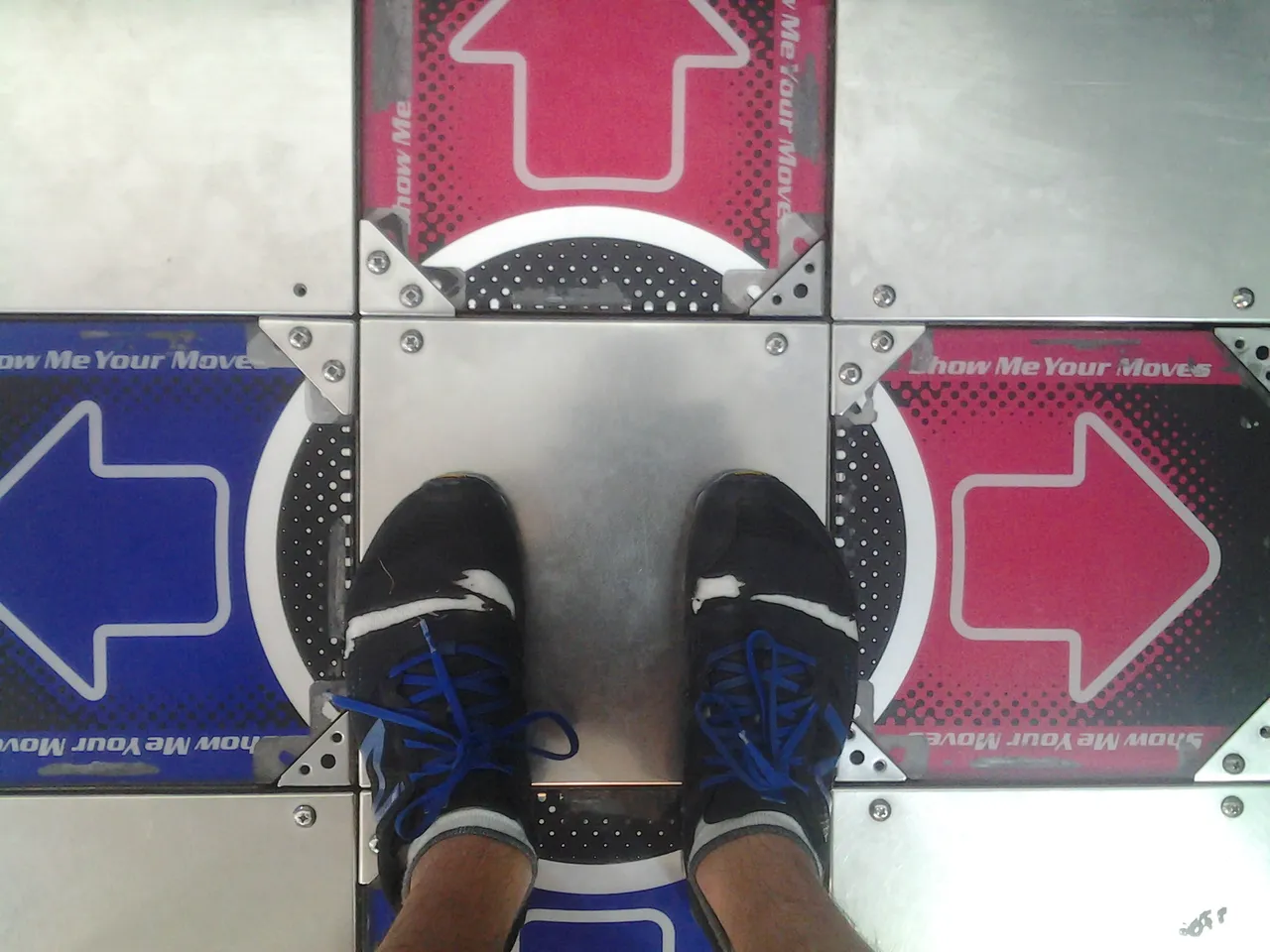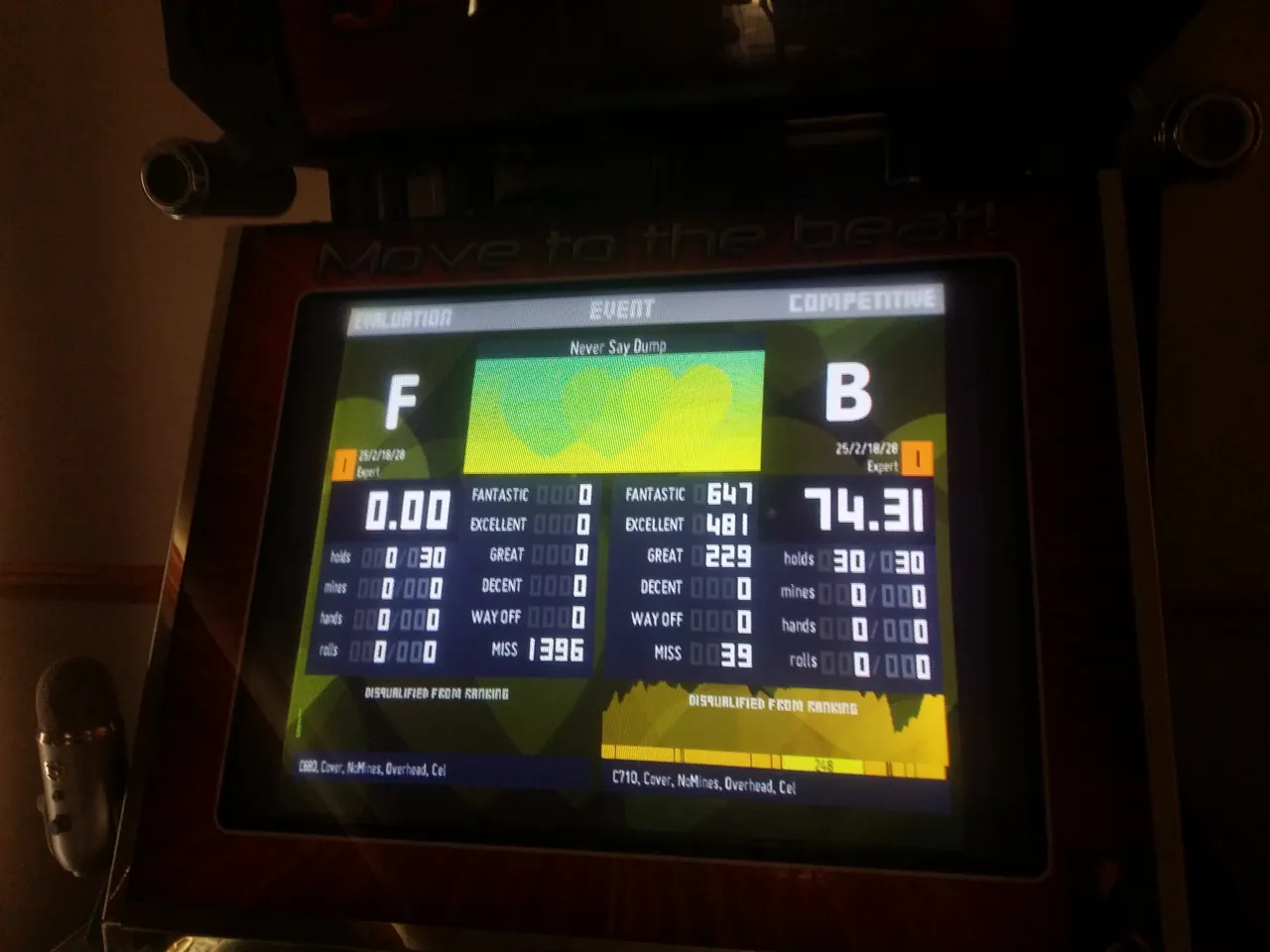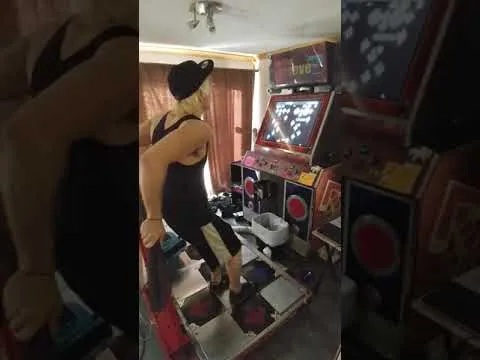

This is what a dance machine looks like. This isn't a Dance Dance Revolution machine (DDR), but a later variant made by a different company called In The Groove. You may know of one with 5 panels called Pump It Up, famous in Korea and South America.

Arrows scroll up a screen, as in this image, and the player is meant to hit them when they reach the top (see those 4 grayed out arrows near the top in a line?). You're supposed to try and hit the scrolling arrows as close to those 'targets' as possible. Music plays in the background, and arrows are timed in sync to the music so that the beats of the music help provide the audio cues of when to hit the panels.


This is the input controller - it's alot like the arrow keys on a keyboard, except much larger. You hit them with your feet. Underneath them are contact pressure sensors, so when you apply weight by stepping on the panel, you complete a circuit within the sensor, sending a signal to the game to register a strike.

This is a good tutorial on YouTube I found that demonstrates how to play the game.

There's also a railing on the back for you to hold onto. It's real easy to lose your balance whilst playing, so the bar here is there if you want or need it. Some players like to play without holding it, but these days most players hold it whilst playing, allowing them to access higher levels of playing ability with more ease.


This is called the evaluation screen. After the song has finished and the player has had a chance to hit all the arrows, this results screen shows you how you did. In the first one, I was playing with my fingers on a keyboard on my computer. In the second one, that was after I actually played a song with feet. The top judgment is called 'Fantastic', and represents the closest possible hit to the note (within a region of 0.0215 seconds before and after the note). Each subsequent judgment represents worse accuracy, until the 'Miss', in which the arrow was either hit too far away to be considered legitimate or the player simply did not hit the note.
The large number (79.03 and 74.31 respectively) represents your percentage score. This is a mathematic average of all the judgments and presented as a single integer. The maximum score is 100.00, which would be attained by scoring all Fantastics for every step in the song. In these runs, I didn't do too well, even though one of them says an A- (these are gratuitous letter grades).
That graph on the bottom represents the lifebar graph. Because this was originally an arcade game, an incentive to apply a standard requirement of minimum playing ability allowed game credits to turnover faster. This is largely redundant on home setups, which is how many professional players play these days, but acts more as a prerequisite of minimum skill to determine whether or not a player has enough to 'clear' a song and add it to their list of 'passes'. Players compare their own lists of scores and passes to each other to value each other's skills. You can see where the graph goes up and down the state my lifebar was in as I was playing. I must have encountered a difficult section where it was tough to keep myself alive, or perhaps I was running out of stamina and started missing notes.
Songs with steps made to them, known as Simfiles, come in a large range of styles and musical genres. Some are slow, and others are very fast. There also exist simfiles that use both the left and right platforms of the dance machine. That's known as doubles.
Dance Games are a real interesting and unique concept, at least from a videogaming standpoint. It's a good way to keep your body moving and to train your cardiovascular ability, as well as train motor-coordination skills and reading and comprehension. There are also stories of people losing weight playing dance games!

I plan on writing a series that details the basics of dance games, as well as some of my own experiences and thoughts about the game. I specialize in the kind of playing that requires a degree of athleticism, so that means fast songs with high numbers of steps that go for many minutes at a time. I'm also a content creator within the four-panel dance game community (that means I also make the steps to the music).
I have limited experience with other dance games... I've played some Pump It Up (PIU) and enjoy it very much, but it's not a game I'm very familiar with and still have to learn my way around it properly and learn all the songs. Video game series' like Ubisoft's Just Dance bear almost no resemblance to floor-input dance games like DDR, ITG and PIU, and they use more advanced motion tracking and camera sensors to allow the entire human body to be used to play the game. Those games resemble real dancing alot better.

If you got this far, you probably wanted to see something like this. Here's a video of me playing recently when I was in America. This whole household is occupied by other dance game players like me, and we would spend our days playing and supporting each other. Despite being a single player game, it's got a great degree of socialization around it that lets people bond through it. Some of the best friends I have today are people I met because I played this game alot!!